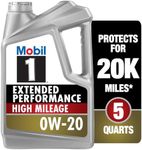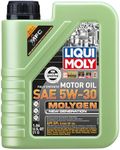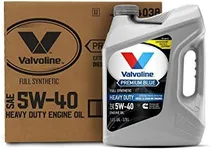Buying Guide for the Best Synthetic Motor Oils
Choosing the right synthetic motor oil for your vehicle is crucial for maintaining engine performance, longevity, and efficiency. Synthetic motor oils are designed to provide better protection and performance compared to conventional oils. When selecting a synthetic motor oil, it's important to understand the key specifications and how they relate to your vehicle's needs and driving conditions. Here are the key specs to consider and how to navigate them.Viscosity GradeViscosity grade refers to the thickness of the oil and its ability to flow at different temperatures. It's important because it affects how well the oil can protect your engine under various conditions. Viscosity grades are usually represented by a combination of numbers and letters, such as 5W-30. The first number (with the 'W' for winter) indicates the oil's flow at cold temperatures, while the second number indicates its flow at high temperatures. For example, 5W-30 oil flows well in cold weather and maintains its viscosity in hot weather. If you live in a colder climate, you might prefer a lower 'W' number for better cold starts. Conversely, if you live in a hotter climate or do a lot of high-temperature driving, a higher second number might be more suitable.
API Service ClassificationThe American Petroleum Institute (API) service classification indicates the quality and performance standards of the oil. This classification is important because it ensures the oil meets the necessary requirements for your engine. The API rating is usually a combination of two letters, such as SN or SP. The first letter 'S' stands for 'Service' and is followed by another letter that indicates the oil's performance level, with higher letters representing more recent and higher standards. For example, SN is a higher standard than SM. Always check your vehicle's manual to see the recommended API classification and choose an oil that meets or exceeds that standard.
AdditivesAdditives are chemical compounds added to the base oil to enhance its performance. They are important because they can improve the oil's ability to protect the engine, reduce wear, prevent corrosion, and keep the engine clean. Common additives include detergents, dispersants, anti-wear agents, and antioxidants. When choosing a synthetic motor oil, consider the type of driving you do. For example, if you drive in stop-and-go traffic or under heavy loads, you might benefit from oils with more anti-wear additives. If you drive in extreme temperatures, look for oils with strong antioxidant properties to prevent oil breakdown.
Synthetic Blend vs. Full SyntheticSynthetic blend oils are a mixture of synthetic and conventional base oils, while full synthetic oils are made entirely from synthetic base oils. This distinction is important because full synthetic oils generally offer better performance and protection than synthetic blends. Full synthetic oils provide superior resistance to oxidation, thermal breakdown, and sludge formation. They also perform better in extreme temperatures. If you are looking for the highest level of engine protection and performance, full synthetic is the way to go. However, if you are looking for a more cost-effective option that still offers some of the benefits of synthetic oil, a synthetic blend might be suitable.
OEM RecommendationsOriginal Equipment Manufacturer (OEM) recommendations are the guidelines provided by your vehicle's manufacturer regarding the type of oil to use. These recommendations are important because they are based on the specific needs and design of your engine. Always refer to your vehicle's owner's manual to find the recommended oil specifications, including viscosity grade, API classification, and any other specific requirements. Following OEM recommendations ensures that you are using an oil that is compatible with your engine and can help maintain its performance and longevity.



















